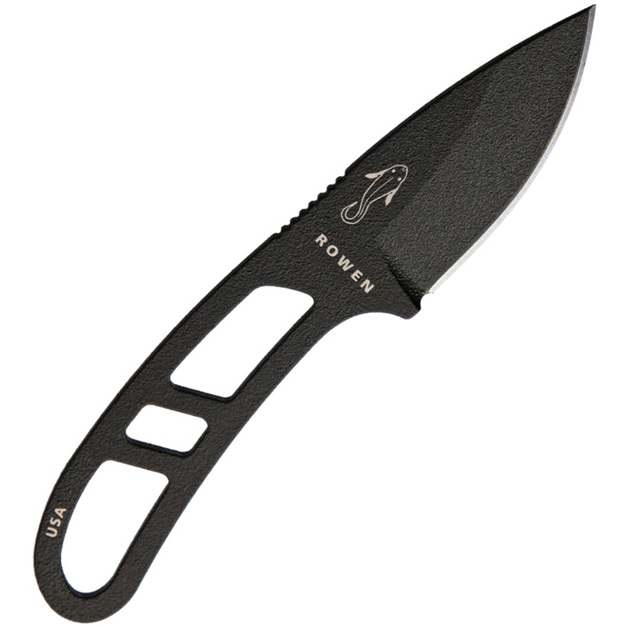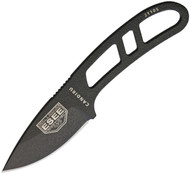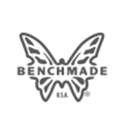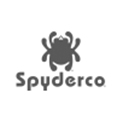ESEE Candiru: The Best Small Fixed Blade Knife
26th Oct 2024
The ESEE Candiru is the best small fixed blade knife. There, we said it.
There are plenty of good ones out there, that’s true enough. Too many to list.
But, to paraphrase Robert Frost, there’s only room for one at the top, and the ESEE Candiru has it.
Let’s talk about why.
Size and Barebones Essentials
The thing about the Candiru that makes it a great small fixed blade knife is the size paired with the fact that there’s nothing here to impress.
Like, literally nothing. It is a completely forgettable profile, but for the fact that it is engineered for functionality, 360-degrees around.
It’s a small drop point with a half-flat grind and skeletonized scales. The whole thing weighs only 1.7 ounces. The blade has a cutting edge of two inches, which is sort of deceptive as it actually looks and feels smaller than that.
There is jimping along the spine, and the tang extends the entire length to 5.13”.
The ESEE Candiru is finished with a powder coat in one of several colors. There’s a basic black, an OD green, an FDE, and a unique purple powder coat, among a few others.
That’s basically it. There’s not much more to these knives.
But their simplicity is why they are so effective. The small size of the knife means it is hard to stress it to the point that it would chip or break; although, the steel works on that front too.
This means you can use this tiny knife for surprisingly big jobs. It has the integrity to process fish and game, anything from the smallest game to the biggest game in North America.
As for wood processing, you can’t chop with it, but you can use it as a baton. Chip by chip, you could take down a whole sapling, or something even bigger if you wanted to.
The simplicity and durability of the ESEE Candiru speak for themselves.
The Steel

The steel, which is remarkably basic, is another thing you should love about this ESEE knife if you don’t yet.
Like the majority of ESEE Knives, the Candiru is made with 1095 steel. This is a most basic tool steel that is in nowise is rare or uncommon.
But there is a whole lot to love about the 1095 that ESEE has chosen for the Candiru. One is that it raises an excellent edge.
The other is that it’s not that hard. This might be seen as a detractor until you consider that the knife is designed to perform in, and has been extensively tested in, actual wilderness.
You don’t want a super-steel in the wilderness that is prone to chipping, and which is physically impossible to sharpen with a bench grinder.
The thing about the Candiru - and yes, it is a selling point - is that its 1095 steel does not hold an edge well, but more importantly, is quite easy to resharpen.
But there’s more. The toughness of this little blade is largely a product of its steel. You could beat it up pretty bad and it won’t quit on you. Go ahead, get one and try.
Now, here’s the one thing you really need to be wary of. The big shortcoming of 1095 is its corrosion resistance, or rather (and more accurately) its lack thereof.
You should avoid using it around saltwater. That’s its biggest flaw. And, never, ever use this thing in a wet environment and then store it without thoroughly drying it off.
The Sheath
The sheath is another win for the Candiru, firstly because it offers an excellent friction fit. Let’s just put it this way - the Candiru is not coming out of that sheath unless you want it to. Some might even say the friction fit is too tight. It gets better with time, use and break-in, though.
Unlike leather, it will not absorb or trap moisture, and it’s physically pretty tough too. The sheath is perforated around the edges so it can be rigged or lashed any way you want, too. This feature makes it naturally MOLLE-compatible and it’s easy to lash to a pack or for scout carry, if you want.
On top of that, there is a hole at the end of the sheath. Attach a carabiner to this and you can clip it to D-rings or MOLLE webbing, and you could also rig it for wear as a neck knife.
The Ergonomics
Lastly, a word on the ergonomics of the ESEE Candiru is in order because this knife, though small, has a lot going for it.
Yes, it is a little small for users that have larger hands. But in the name of discretion and minimalism, both of which things this knife is angled towards, it’s better to err on the small side. There are other knives in ESEE’s lineup that are better for bigger users.
Without scales, it is so slim and light you could conceal it, completely, in even very small pockets, and it won’t print. It’s light, too, so you wouldn’t know it’s there until you needed it.
The jimping is a good sell too, as it improves the grip on the small knife, and the nature and geometry of the tang, in such a way that it comes to meet the belly of the blade, results in a pleasing curve that functions almost like an inverted thumb scoop. This means you can comfortably hold the knife in a reverse grip and use it easily as a skinner.

Not Here for an ESEE Candiru? Explore Our Other ESEE Knives
All of these things converge in the ESEE Candiru to make it one of the best small blades out there, if not the single best small fixed blade knife on the market at the current time.
Of course, there are lots of different preferences out there, so these observations notwithstanding, there might be a better pick from a catalog of ESEE Knives for your purposes.
You can view our full collection of ESEE Knives via the previous link or reach out to us at WhiteMountainKnives@gmail.com if you have any questions.









